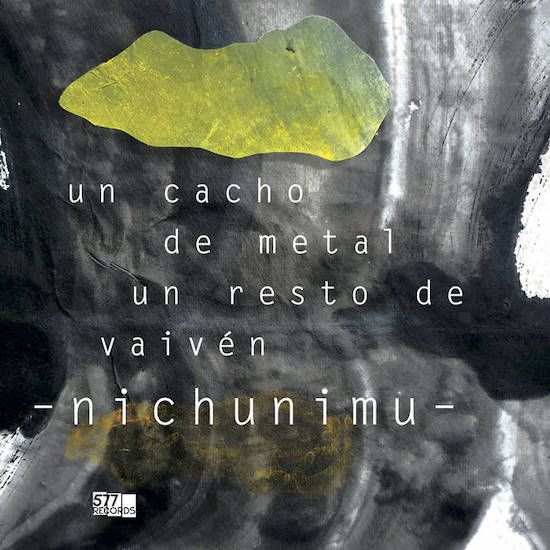Chilean trio Nichunimu, aka Benjamin Vergara (trumpet), Nicolás Carrasco (radio and synthesizers) and Matias Mardones (percussion), were inspired by patterns of circularity and repetition when recording Un Cacho de Metal, Un Resto de Vaivén. But it manifests in ways you might not expect in these seven electro-jazz freakouts.
Opening track ‘Cachos’ sees mournful trumpet meet alien counterpoint from a bloopy synth. Floor toms roll in like a storm. Rising in intensity they knock the trumpet off course, its melody picking up additional notes and flurries before finally going radically off-piste. The synth follows suite, hardly stable to begin with, it gets progressively more dislodged from conventional musicality as it goes.
Circles suggest loops, but there’s a conspicuous lack of obvious repetition here, Nichunimu instead work in an off-kilter call and response. An event happens, whether it’s a blast of radio chatter, a sudden surge in rhythmic complexity from the drums, or even a momentary silence, and you feel it ripple through the trio.
The player’s reactions to each other are fascinating in their unpredictability. Their circular motion is far from the equal rotation of a vinyl record or a tape spool. It perhaps has more in common with a biofeedback system, where inputs from one player cause unpredictable actions in the others. It creates an ecosystem whose lines of interaction are definitely there, but they’re never straight, predictable or predetermined.
In broad strokes, their music sits somewhere between late fifties Sun Ra Arkestra and Bebe and Louis Barron. Powered forward by a sculptural approach to drumming akin to Valentina Magaletti or Will Guthrie. On ‘Entrechócanse’ the electronics play out cosmic dialling tones which the trumpet’s frantic runs seem to mimic, or perhaps parody. The drums slip into a precarious dance, as if trying to bridge the gap between the other two players.
‘La Calma Manda’ sees Mardones and Vergara settle into unequal spiralling motions, starting relatively in sync before opening up space as they drift apart. Carrasco’s electronics bring rough edges of static and distortion, making the other two instruments seem smooth, more organic, through contrast. The album locks into its most sturdy groove on closer ‘Paso Doble y Triple’, yet there’s always the sense the trio are playfully trying to destabilize it. To perhaps keep the circles from overlapping too neatly.
Nichunimu’s circularity comes across as a precariously balanced organic-mechanic biome rather than a geometric shape. A wobbly yet intricate system which flourishes through instability.


